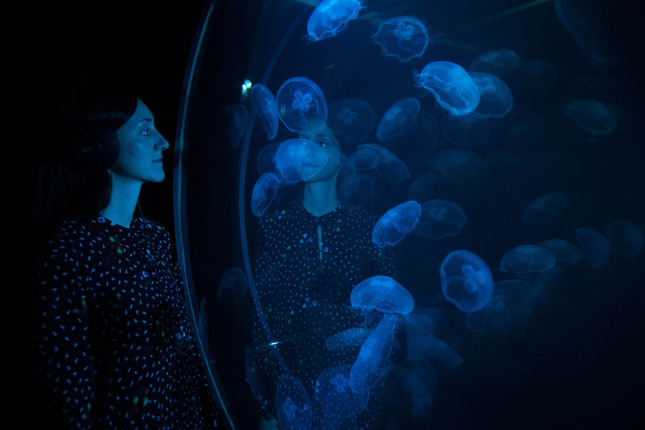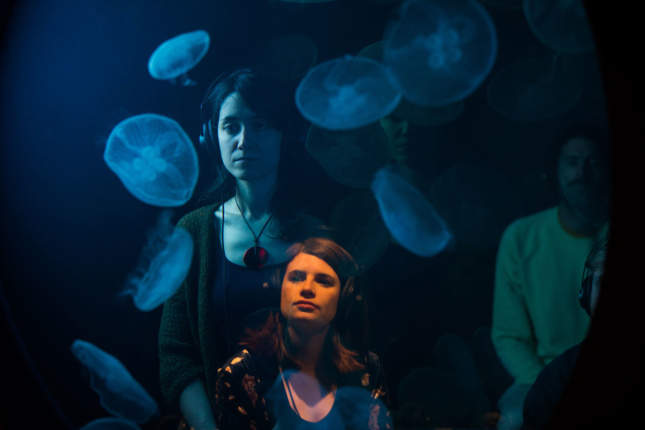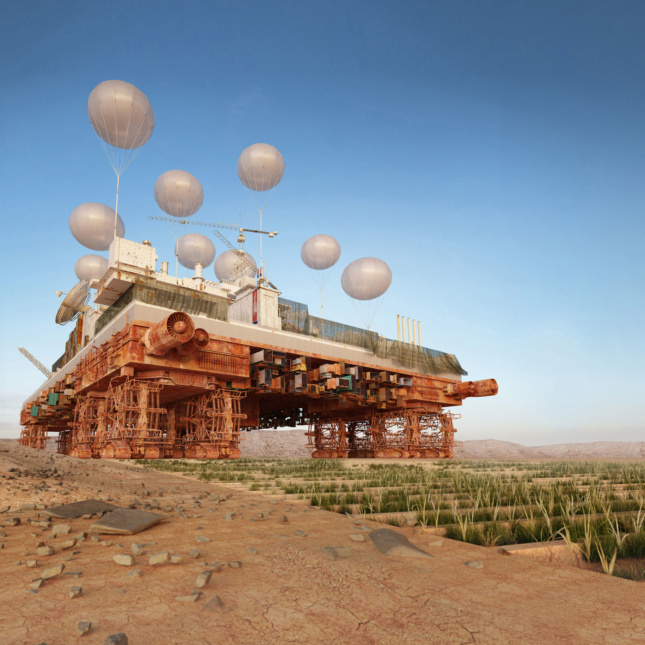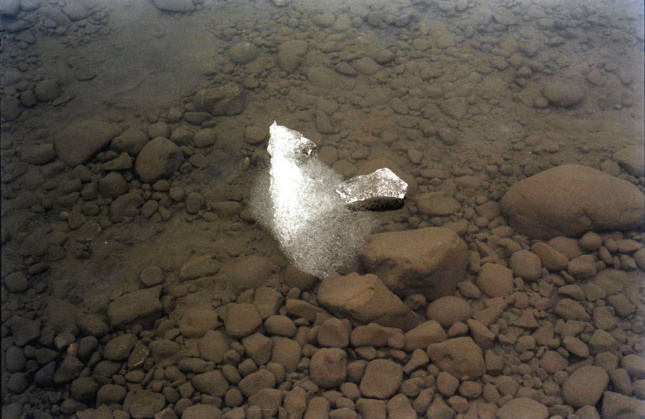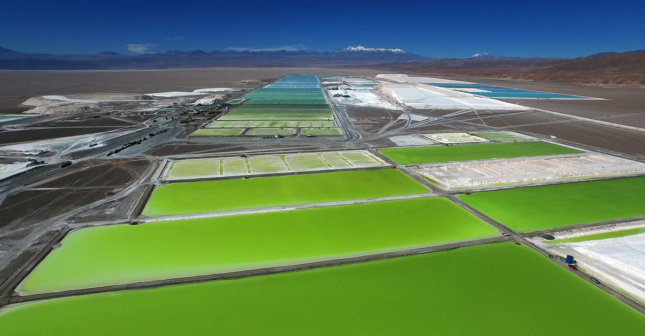To planet Earth, the city of Venice being a designated UNESCO World Heritage site is meaningless. It can, and will, treat the city with abject indifference as was demonstrated earlier this month. In more recent climate chaos news, floods have devastated other parts of Italy, causing a viaduct to collapse near the city of Savona; meanwhile, across the other side of the world, fires are raging across the Amazon and Australia. Bizarrely, and tragically, many governments lack the impetus to make any meaningful change in this regard. We find ourselves in a dire situation, crying out for radical approaches that will galvanize the human race into action, something that Eco-Visionaries, which opened last weekend at London‘s Royal Academy of Arts (RA), strives to do.
First of all, what an exciting name: “Eco-Visionaries,” does it get more enticing than that? Upon entering the exhibition, audiences are greeted with a rotating model globe shrouded in green, murky dust. Playing through speakers in the background meanwhile, is Clara Rockmore’s ominous rendition of Camille Saint-Saëns’ Le Cygne (The Swan). This is Domestic Catastrophies nº3: La Planète en Laboratoire by French artist collective HeHe and it sets the tone for the rest of the exhibition, which is a sobering affair; but the vision of what, exactly, is as about as clear as HeHe’s installation, despite being populated with visionaries.
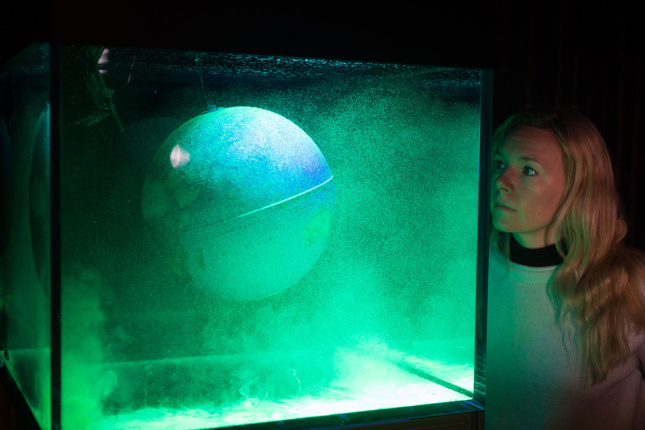
But that’s not to say it’s all doom and gloom either, despite the fact that the second installation you see features a giraffe being graphically shot, with blood spewing rapidly from its neck. A journey has been crafted by in-house RA curator Gonzalo Herrero Delicado (who worked with Pedro Gadanho and Mariana Pestana to curate the original show for Lisbon’s MAAT) taking patrons through installations that highlight the climate crisis we find ourselves in and propositions that attempt to mitigate it.
This seems like a natural progression one should take when addressing the issue of saving the planet: here’s a problem and here’s how we might solve it. However, Eco-Visionaries jumps between art as commentary and architecture as proposition, and struggles to get a strong grip on either. The architecture that does hint at radical change has to build upon the success of others—New York firm WORKac developed The Dolphin Embassy from Ant Farm, while Paris-based Studio Malka Architecture’s Green Machine riffs on Archigram’s Walking City. Both fall short, and architects don’t come off as potential planetary saviors by any stretch.
The strongest installations, meanwhile, are presented as art. An imaginative proposition comes from Turkish designer-artist-researcher Pinar Yoldas, whose Ecosystem of Excess envisages plastic-gobbling pelagic insects populating a post-human planet and cleaning it up in the process. On a similar strand, working alongside DeepMind artificial intelligence, artist Alexandra Daisy Ginsberg’s recreation of a white rhinoceros is powerful. The now-extinct creature comes to life at a 1:1 scale, developing from a wandering cluster of pixels into a great beast that seems confused by the white box it finds itself in. Here we question, besides humanity, what lies ahead for the animals of this Earth. Extinction? Digital archival?
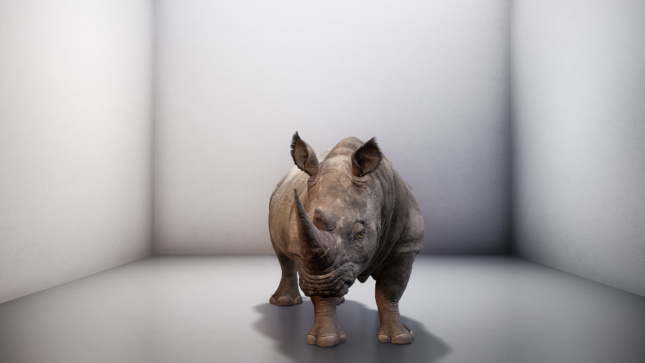
That’s certainly not the case for jellyfish, who, as it turns out, are seemingly the harbinger of the end times. The pulsating creatures thrive in the conditions created by climate change. “More warm water,” says a narrator in the exhibition’s final, and best, exhibit, “is a disaster for anything that breathes and a dream come true for anything that doesn’t breathe much, like jellyfish.” Titled win > < win, the installation is by Berlin-based artist group Rimini Protokoll and occupies a room in the third and last gallery of the exhibition. win > < win splits audiences in two with a circular tank filled with jellyfish—something the RA had to obtain a zoological license to host. With clever lighting, the two audiences are revealed and hidden from each other, the tank acting as both a mirror and portal for the divided audiences.
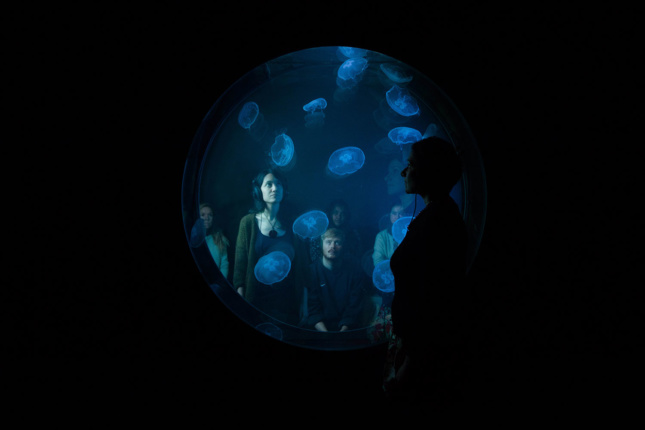
Through headphones, we learn about the ascendance of jellyfish, a species that benefits from humans killing their predators with overfishing and pollution as plastic bags kill turtles and other animals. The influx of jellyfish has direct consequences for humans too, as they clog up nuclear power and desalination plants across the world. “Jellyfish will be the only survivors when everything else has fallen apart,” the narrator ominously intones. Despite this sombre note, win > < win is fun, engaging and informative all at the same time and makes the $15 exhibition fee is worth it. It also represents a success for Delicado, who told AN that he wanted the exhibition “to talk a younger audience,” hence the inclusion of more familiar names like Virgil Abloh and Olafur Eliasson, whose installations—a gold, supposedly sunken chair and pictures of melting ice, respectively—do little to inspire.
And that’s what we need, inspiration. In his book, The is no Planet B, author Mike Berners-Lee writes: “Whilst the idea of limiting climate change seems like essential damage limitation, in itself, it spectacularly fails to excite most of us. More often than not, it gets framed primarily as the need to forego things we enjoy. And since humans–all of us–hate thinking about anything unpleasant, the temptation to switch off is hard to resist.”
Eco-Visionaries, as its title tantalizingly suggested, might change that. This was a great chance to show the world that we might, by the skin of our teeth, be able to claw ourselves out from climate change-induced catastrophe. In this regard, Eco-Visionaries falls short. Perhaps this was because the RA only allowed the exhibition to have three rooms, preventing it from going further. However, while filled with insight and inquisitive introspection into how humanity lives on this earth, the feeling of future inspiration is sadly lacking.
Eco-Visionaries runs through 23 February 2020.






